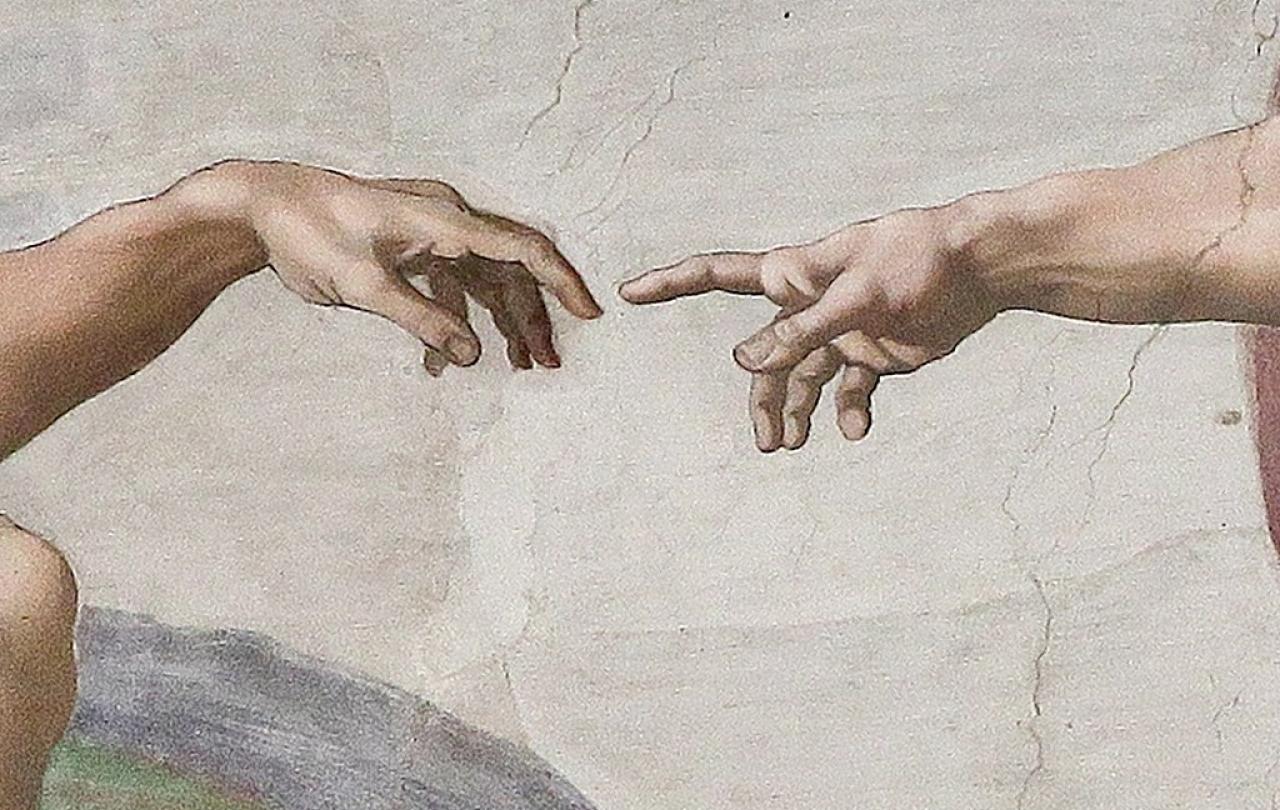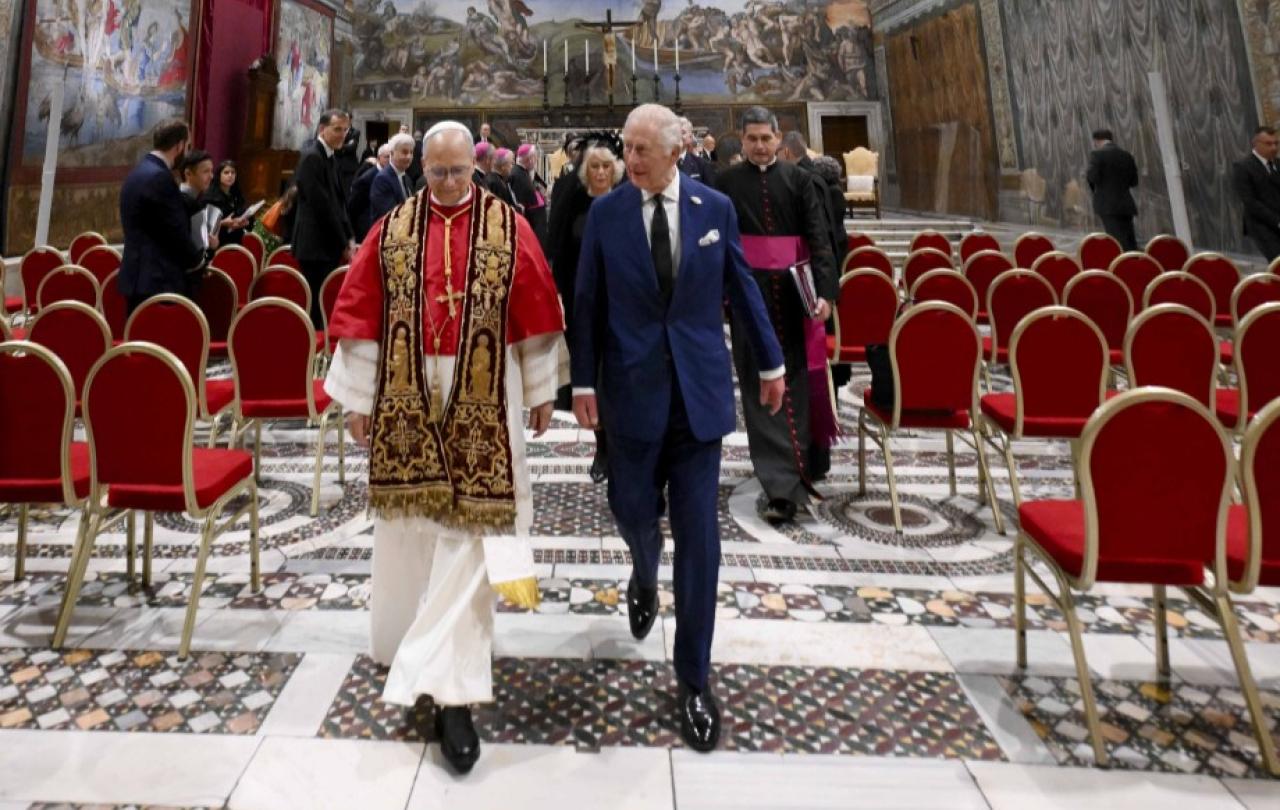
Singing the Nicene Creed on Sundays in Latin, a language I do not understand, does not detract from its meditative power. Admittedly not reading music, means attempts to pin the syllables to the blobs on the stave part company with the sounds of the choir and congregation, around the time we turn the sheet over, at ‘sedet ad dexteram Patris’. Sometimes I get back on track by ‘qui locutus est per prophetas’, and sometimes I wait until Amen. Either way it is a meditative experience, on a different level to day-to-day information processing.
Even in a first language the Creed’s surface is oblique for the modern mind. This initial impenetrability accounts for why, outside the Church, celebrations for the Creed’s 1700th anniversary are niche.
BBC Radio 4 is running a six-part series Lent Talks, with thinkers and theologians expanding on aspects of the text through personal experience.
In the first episode theologian Frances Young perceived God’s almightiness in caring for her son Arthur, who was born with profound, life-limiting disabilities. Arthur’s presence in Young’s later-life, ordained ministry, underlined how almightiness is experienced through gentleness: “A hidden, elusive Loving and redeeming presence, gently transforming everything through sheer grace.” For astrophysicist and theologian David Wilkinson, contemplating ‘That God made all things seen and unseen’, validated science as a Christian endeavour. Wilkinson recalled uncharacteristically hugging a fellow astrophysicist on a Durham street in 2015, at the news of the first direct observation of gravitational waves. The observation captured the earth moving a fraction due to a ripple in spacetime. Incremental glimpses of the workings of the universe serve as stepping stones to fully appreciating creation, and the awe of our place in it.
Glimpsing a part of a concealed whole, leading to the understanding of greater things, features throughout the Bible. In the King James version of Hebrews we learn: “Who serve unto the example and shadow of heavenly things”. More modern translations use ‘copy’ instead of example. Endeavours on earth, done in the right spirit, can serve as a foretaste or shadow of heaven, of eternal life.
While the language of the King James Bible offers all things to all men and is woven through literature, the Nicene Creed’s presence is scant.
As a literary device, a part serving for the whole, or foreshadowing future events works in drama or poetry, but in novels there is less to see. Rectory-raised Jane Austen would have heard the Creed throughout her church going life, but church service scenes are missing from her fiction. Charles Dickens’ faith journey from criticising the established Anglican church of the mid-nineteenth century, to exploring Unitarianism, make the absence in his novels of the Creed, with its centrality of the Trinity, of a piece with his spiritual outlook. Raskolnikov’s glimpse of an icon in the pawnbroker’s home in Crime and Punishment, points to Dostoevsky’s greater ease with fragments momentarily illuminating the bigger picture: ‘in the corner an icon-lamp was burning before a small icon’.
Modern artists also offer transcendent moments of faith gesturing towards an overarching framework of belief
Visual art's capacity for rendering the invisibility of the past, the distant, the imagination and the metaphysical, make it a more likely medium for extending the Creed beyond the walls of the church.
In 1541 Pope Paul III allegedly fell to his knees in wonder in the Sistine Chapel, at the presentation of Michelangelo’s Last Judgement fresco on the altar wall. Michelangelo’s unorthodox, for the times, meditation on personal salvation depicted a cowering Virgin Mary, a beardless Christ, an unbiblical, pointy-eared Charon, the ferryman in Greek mythology, appearing in the underworld, and cascades of nude bodies tumbling towards their eternal fate. By the late1550s Michelangelo’s friend Daniele de Volterra was ordered to paint draperies on some of the naked figures, to correct indecencies. But the devout Michelangelo’s personal vision of the Creed’s ‘judge the quick and the dead’, had already been copied by numerous artists since its unveiling. Giulio Bonasone’s engraving, after Michelangelo, The Last Judgement, 1546, is just one example of the Renaissance artist’s contemplation of ‘the life of the world to come’, as he entered his seventh decade, taking flight into the wider world.
Modern artists also offer transcendent moments of faith gesturing towards an overarching framework of belief. In turn of the century France, as the country underwent a Catholic revival, Gwen John was one of many artists working on making modern art full of religious meaning. Conventional paintings of the Annunciation show Mary with the Angel Gabriel, with the white-robed angel, spreading their wings. Drawing on her friend Rainer Maria Rilke’s poem Annunciation (Words of the Angel), John created an Annunciation scene, with no visible angel. In Girl Reading at the Window, 1911, a young woman in contemporary dress, is illuminated by light coming through the window, as is the white lace curtain, gently blowing out to touch her dress. Setting aside the expected haloes and wings, John brings to life the Creed’s teaching ‘was incarnate of the Holy Ghost and the Virgin Mary’.
A dawning realisation heralding a far greater truth is also apparent in Emil Nolde’s Paradise Lost, 1921. In bright, unnaturalistic, colours and in a heavily outlined, naïve style, Nolde catches Adam and Eve’s expressions, as the full consequences of their banishment from Eden become apparent. A moment in time indicates the long road ahead to the promised world of the Creed.
At the height of the Cold War in 1971, nearly three million Soviet citizens went to see Andrei Tarkovsky’s epic portrait of medieval icon painter Andrei Rublev, five years after the film’s original release. Despite censorship, monochrome projection and no posters advertising the screenings, people found a way to engage with a depiction of belief, creativity and a search for meaning, set against the viscerally brutal backdrop of Tartar pillaged,1400s Russia.
In an age of Netflix narratives and individualism, connecting with the collective wisdom of churchmen in Constantinople from 1700 years ago can, unavoidably, feel like a stretch. But like the best art, the Creed offers the chance to step out of time, braiding us into us into the faith and vision of others, in ways none of us can understand.
Listen to the BBC Lent Talks
Celebrate our 2nd birthday!
Since March 2023, our readers have enjoyed over 1,000 articles. All for free. This is made possible through the generosity of our amazing community of supporters.
If you’re enjoying Seen & Unseen, would you consider making a gift towards our work?
Do so by joining Behind The Seen. Alongside other benefits, you’ll receive an extra fortnightly email from me sharing my reading and reflections on the ideas that are shaping our times.
Graham Tomlin
Editor-in-Chief





